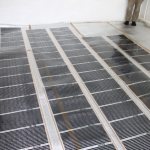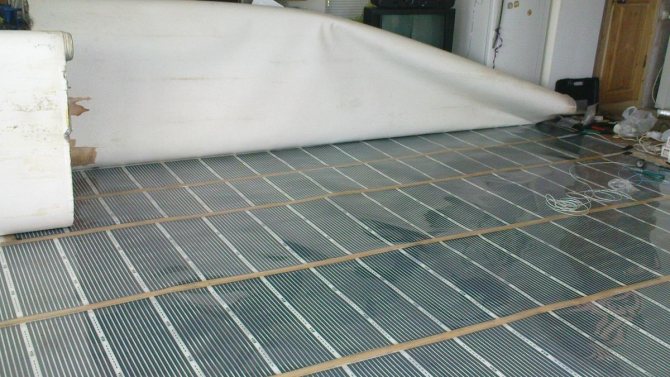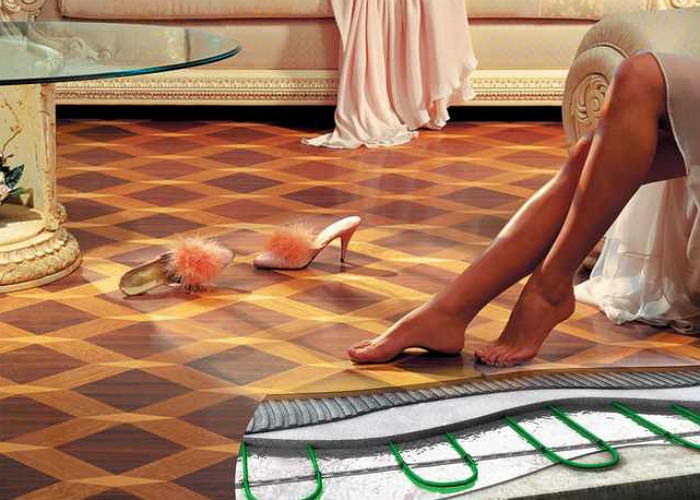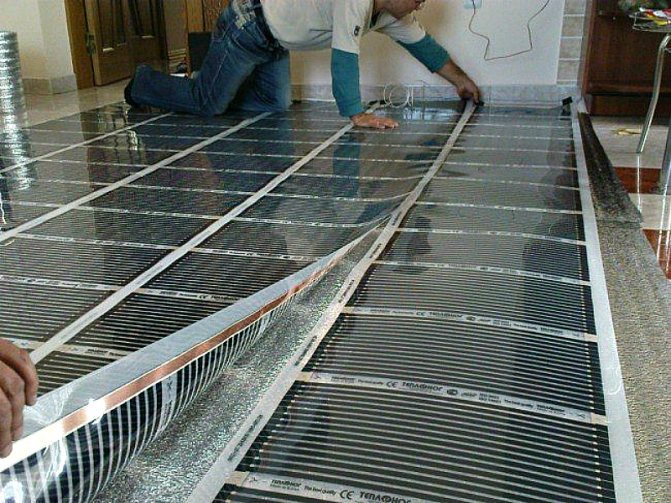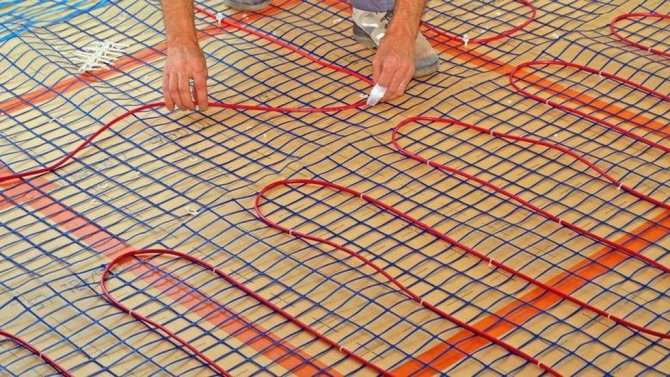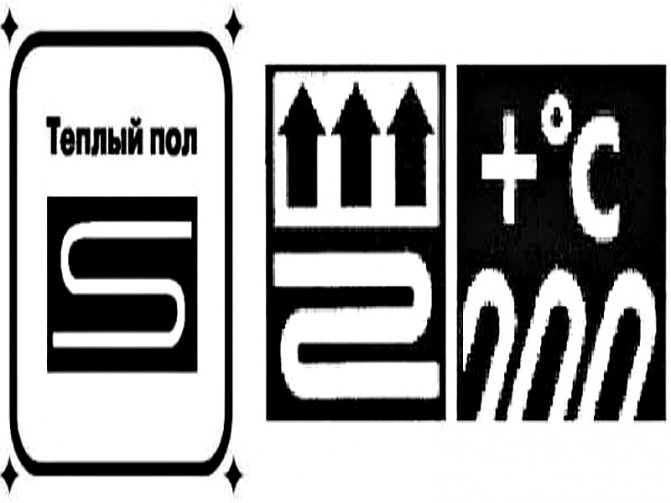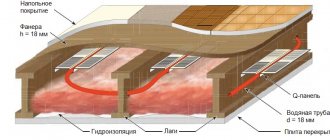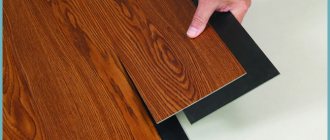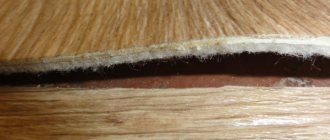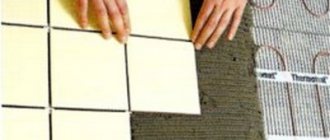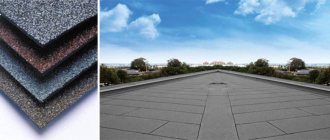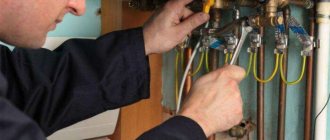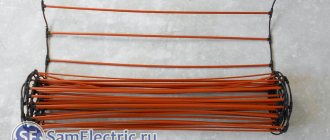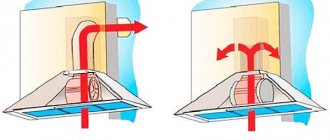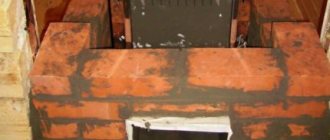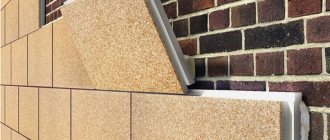Is it possible to lay a warm floor under linoleum today raises a lot of controversy and questions. You can find a number of reviews and opinions that laying a warm floor under linoleum is impossible. However, there are several affirmative arguments and facts for all these opinions, which will be discussed in this article. We'll say right away that it is possible to put heating under this covering. The main condition is to choose the right linoleum for a warm floor. This is what this article will be about. You will also learn how to carry out installation work.
Is it possible to lay a warm floor under linoleum
You can lay a warm floor under linoleum. Moreover, there is a perfect technology for this. This is an infrared film field. If everything is clear with the choice of the heating element, then it is extremely important to learn the question concerning the linoleum itself. First of all, it should not be on a heat-insulating base. Otherwise, the heating efficiency will be reduced to almost zero. Moreover, it is extremely important to choose the right linoleum for its combination with a warm floor. Today there are many of its varieties, for example, PVC linoleum and the like. The market is filled with different types of linoleum.
It is possible to lay linoleum on a warm floor only the one that is allowed for this by the manufacturer. On the packaging and in the technical passport for this material, the manufacturer must put a special sign indicating the admission of this product under linoleum. If you do not pay attention to this important point, then you can purchase an unsuitable linoleum. As a result, this will lead to the fact that, under the influence of high temperatures, it will begin to release formaldehyde into the air, a dangerous substance for people and pets. Moreover, the product will simply become elastic and break through.
Advice! When choosing linoleum, it is extremely important to pay attention to the safety class.
Moreover, a warm floor under linoleum is possible only if infrared heating is used as a heating element. This heating is the softest and most favorable. Now let's consider what kind of infrared heating is best to lay under this coating.
Types and features of linoleum
First, let's figure out the positive aspects of linoleum. Why do many people prefer to put it?
We recommend: How to connect a warm floor?
Positive sides:
- it is convenient to clean rooms with linoleum;
- easy assembly and disassembly;
- resistant to pollution;
- long wear under the right operating conditions;
- repels water;
- certain species are resistant to high temperatures;
- affordable prices and a wide selection on the market;
- combined with other building materials;
Some people choose other coatings for the reasons that:
- color changes over time;
- the drawing is erased;
- does not withstand low temperatures;
- PVC linoleum has an unpleasant odor;
In order for the flooring to be of high quality and to serve for many years, it is necessary to understand its types and characteristics. Don't just be based on price.
Expensive material, in turn, can be bad when installed in the wrong conditions, just as cheap material can be good when used correctly.
Although in some cases it is better to overpay a little for quality than to ignore important characteristics, choosing cheaper and more affordable material.
Linoleum is divided into 3 classes at the place of operation:
- domestic. Withstands a small load, suitable for installation in residential premises;
- semi-commercial.Used in medium-duty commercial buildings;
- commercial. The most durable and thickest type of linoleum, is used in public institutions with a large flow of people;
With the classes sorted out. Now let's move on to the 5 main subspecies of linoleum:
- natural. Possesses increased fire resistance and resistance to electricity due to organic components in the composition. Eco-friendly and safe for both people and pets. Long-lasting and wear-resistant type of linoleum. Among the minuses - fragility during transportation, flooring requires a flat surface, unstable to moisture, expensive price;
- linoleum-PVC. Poorly tolerates high temperatures, deforms over time, flammable, unstable to substances with a caustic chemical composition, has an unpleasant odor. The material is definitely not suitable for a warm floor;
- alkyd (glyphthalic) linoleum. Fabric backed coating with added natural ingredients, which has increased the cost in the market. The products are endowed with increased thermal insulation and various designs. Cons - does not withstand temperature jumps, deforms over time, it is not recommended to transport in the cold season;
- nitrolinoleum (colloxylin). Single layer nitrocellulose based material. The small thickness has both pros and cons. The first includes light weight, flexibility, plasticity. The second - poorly insulates noise, heat, installation requires a completely flat floor, supports combustion, ignites without problems;
- rubber. Two-layer rubber-based coating. Ductility and moisture retention are guaranteed, and the rubber coating adds anti-slip properties. Antistatic, resistant to temperature extremes. Found application in public buildings, medical institutions, sports facilities.
We recommend: Do you need a mixer for an underfloor heating?
The above types and their characteristics will help you make the right choice, based not only on the price, but also on the most important qualities of the material. It will also be a crime not to affect the types of floor heating, because in order to choose the perfect combination, you need to know the characteristics of both.
Which is the best IR heating
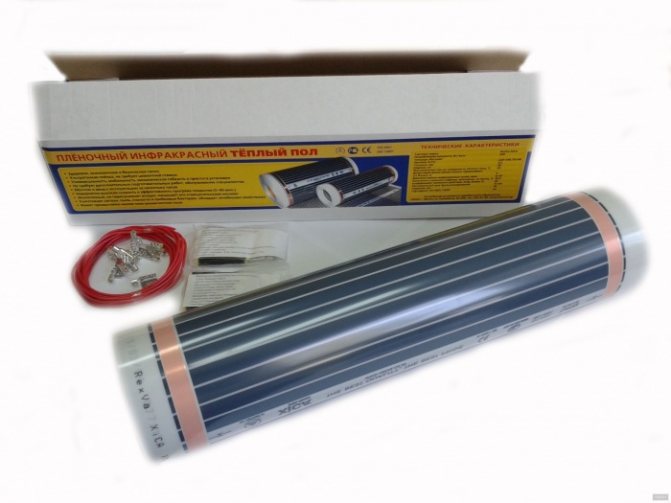
Making a warm floor for linoleum with your own hands is possible using infrared heating. There are two types of it: film and rod. Which one is the best to stack? Let's consider their features:
- If we talk about the budget option, then this is a film infrared heat-insulated floor. This heating element is best combined with such a coating. Thanks to the installation of a thermostat, you can set the most comfortable temperature, which will allow you not to spoil the linoleum. The heating process is carried out by radiation of an infrared beam.
- As for the IR rod heating, a composite material is used here. Flexible rods are built into thermocouples with busbars. They also radiate infrared heat. In contrast to the film floor, the rod has the advantage of using a self-regulating cable. That is, it regulates the floor heating temperature by itself.
Surface preparation
Before laying a film warm floor under the linoleum, you need to level the surface. The fact is that an infrared warm floor is made of a film (hence the name) and therefore is very sensitive to irregularities.
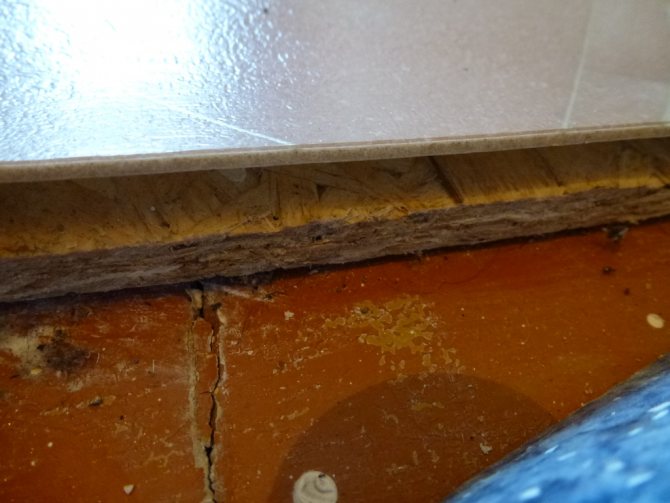

It is not difficult to level a wooden floor. For these purposes, plywood with a thickness of 6 mm or more is used. The material fits tightly to each other, without gaps and edge protrusions. Another option would be to use OSB plates (according to reviews, this option is even better).Unlike plywood, they are more durable, in addition, they have an antiseptic effect (prevent the spread of mold and mildew). It is recommended to use OSB-3 marking plates, 8 mm thick. In the case when it is necessary to make the surface according to the level, a wooden bar of the required size can be placed under the sheets of material.
If the wooden floor does not have significant irregularities, depressions, cracks and is made according to the level, you can do without preliminary leveling and immediately start laying the thermal insulation.
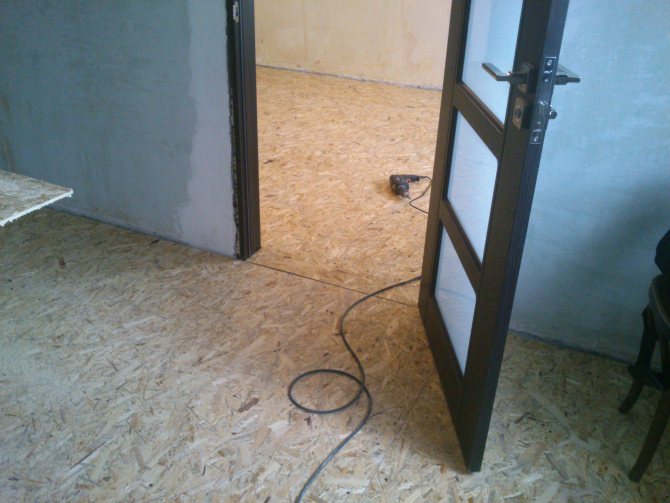

Leveling a concrete base is a more laborious process. Although labor costs can be reduced if you use a mixture for a liquid floor. The composition has a liquid consistency, spreads evenly over the surface. The master only needs to walk over the layer with a needle roller so that air bags do not form. Important: the electric floor can be installed 3 weeks after the end of the work.
Is thermal insulation needed


Installation of underfloor heating under linoleum raises another question, which is associated with the installation of a heat-insulating layer. Of course, you can't do without it. Thermal insulation is even needed if the warm floor is installed on a wooden floor. Wood can take up some of the heat energy, which will reduce the efficiency of the entire system.
The thickness of the thermal insulation layer must be at least 3 mm. There must be a layer of reflective film on top of the thermal insulation. It is good if the insulation immediately has a reflective layer. In this case, all heat energy will be directed up the room. As a result, the efficiency of the warm floor will be at a high level.
Important! When installing thermal insulation, it is unacceptable to leave any joints and gaps. The insulation is connected to each other with adhesive tape.
Underfloor heating installation technology
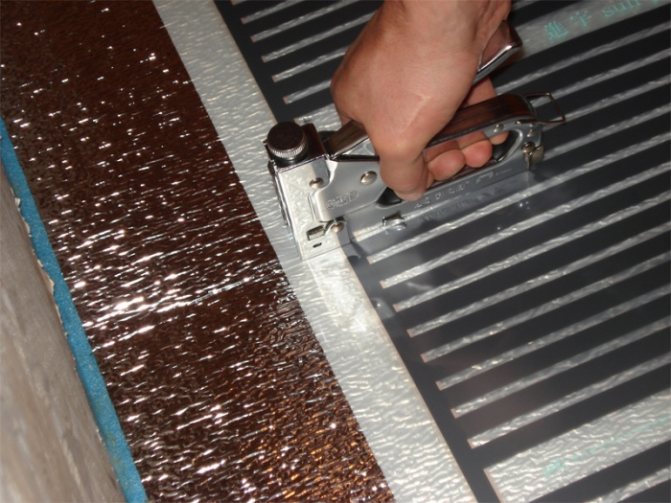

The principle of installing underfloor heating under linoleum is reduced to several successive stages. You can do all the work with your own hands and without the involvement of specialists:
- First of all, the preparation of the base is carried out. You need to make sure that it is perfectly even. Among other things, the floor surface must be completely free of construction debris and dust. It is very good if you have a construction vacuum cleaner. They can be trained well. If the rough coating has obvious irregularities, then it is necessary to fill the screed. For this, you can use self-leveling mixtures.
- When everything is ready, the waterproofing layer is laid. Ordinary polyethylene can be used as waterproofing.
- A roll of thermal insulation is rolled out on top of the waterproofing. It is connected to each other with scotch tape.
- The next step is the installation of the infrared heating floor. The mats are laid out over the entire area of the heated surface. Please note that cutting the heating foil can only be done in the indicated locations. In this case, the cut is necessarily insulated with bitumen insulation.
- The film is connected using special clamps. They are mounted on copper strips. The film is connected in parallel.
- When laying the film, it is unacceptable to overlap it. When doing this, make sure that the copper busbars are pointing upwards.
- The wire from the film is directed to the thermostat. The thermostat connection is carried out according to the scheme indicated on the reverse side of the thermostat.
- A temperature sensor is placed directly next to the heating element. Its installation must be carried out in a special corrugation. Due to this, if it fails, the sensor will be easy to change.
- As for connecting the thermostat to the electrical network, then it is best to draw a separate line to the electrical panel and install an individual RCD.
Before laying the finishing flooring material, it is necessary to carry out a test run of the warm floor.To do this, turn on the heating for 20 minutes. You need to make sure that all areas of the floor are heated. Also make sure that all connections to the films are properly insulated with bitumen insulation. If you find any malfunctions, then be sure to eliminate them. Failure to do so may result in a short circuit.
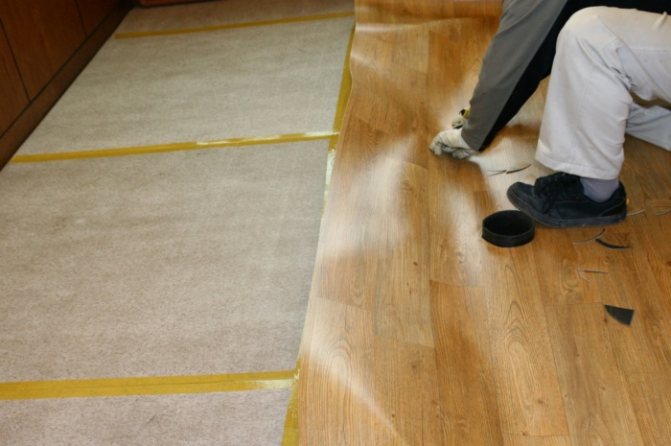

If everything is working properly, then you can start laying linoleum. Please note that PVC linoleum or some other of its kind is a relatively soft coating. It is very easy to pierce it with a sharp object, heel, etc. Therefore, before laying it, be sure to put plywood or other sheet material on the floor. Before that, lay polyethylene on top of the foil, which will exclude accidental damage to the heating element.
Advice! It is recommended to stick the infrared film to the base with tape. This will keep the heating circuit in place when installing the topcoat.
So, having laid plywood or other sheet material, you can start laying linoleum on the floor. The process of laying linoleum on a warm floor is no different from simple laying. Spread it all over the floor and leave it on the floor for about a day. During this time, he will acquire the required room temperature and straighten out. Then its flooring is carried out.
Types of thermal insulation
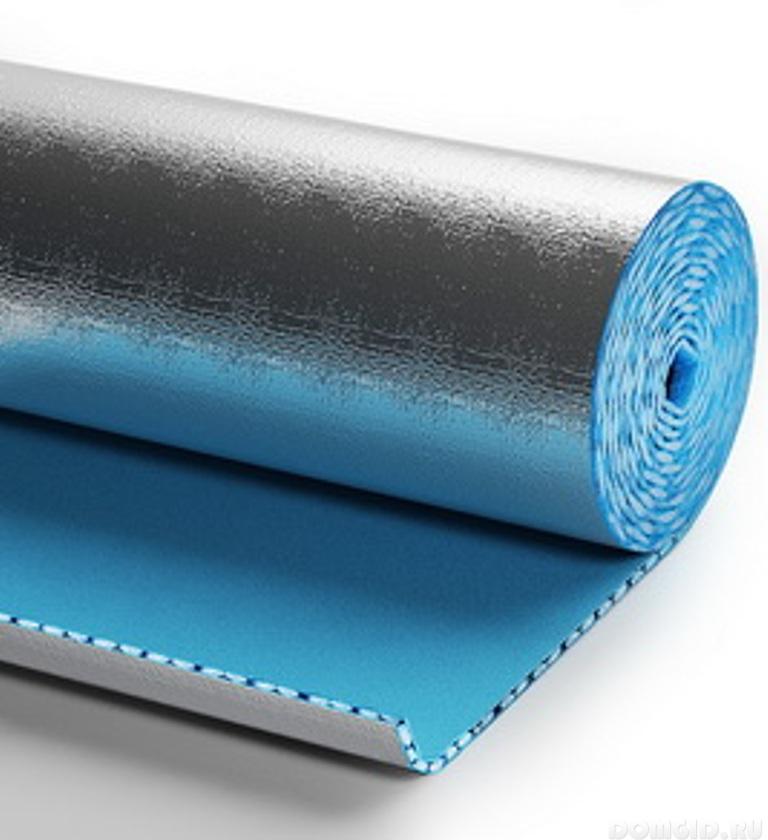

Roll materials are generally soft
After the thermal insulation has been installed, not only comfortable conditions for your feet will be created, but also a whole series of positive characteristics of the flooring and the entire base.
For example, due to high-quality work performed, its strength will increase, in addition, it will become much drier and harder. And the floor covering itself will delight you with its perfectly flat surface, cleanliness and the absence of cracks and potholes.
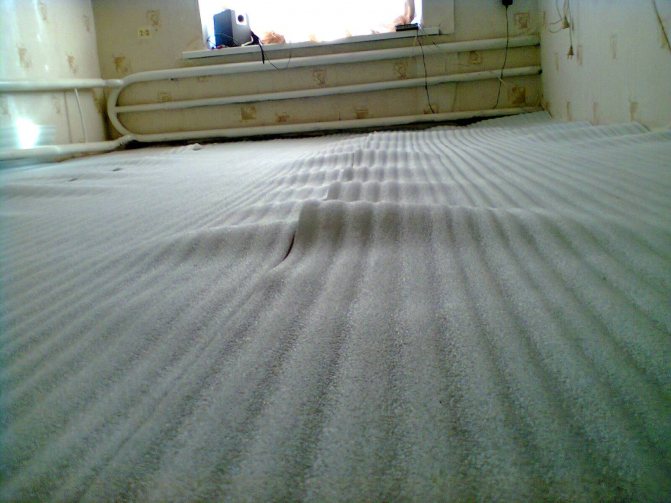

In order to choose the right insulation for linoleum, you need to carefully read its characteristics and only after that, calculate the amount of material and purchase it.
A wide selection of thermal insulation, differing not only in prices, but also in properties. In addition, all the insulating material used for laying under linoleum can be divided into 2 categories: soft roll and hard plate products. In addition, you can make a warm floor under the linoleum on concrete floors using natural or artificial insulation.
Natural
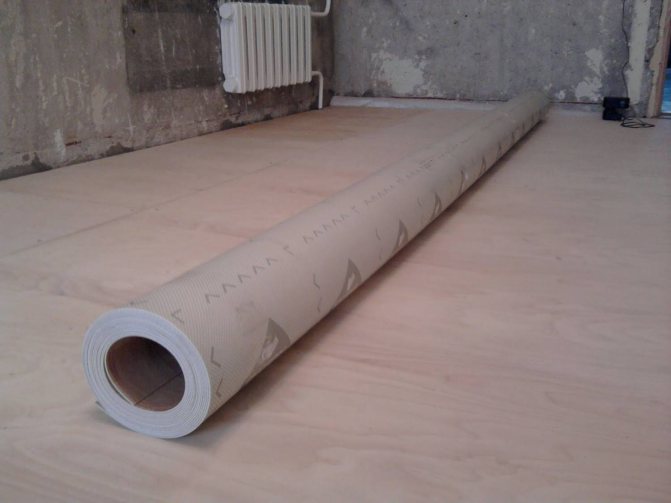

Before talking about the benefits of environmentally friendly materials related to this situation, we can give an example: if you put a living rose in a plastic bag, then there will be practically no smells from it.
In addition, it will dry out very quickly. A similar situation is with the use of natural insulation, which is laid on a concrete floor and covered with synthetic material. Therefore, when choosing environmentally friendly types of thermal insulation, you need to lay only natural linoleum on top of them.
Bung
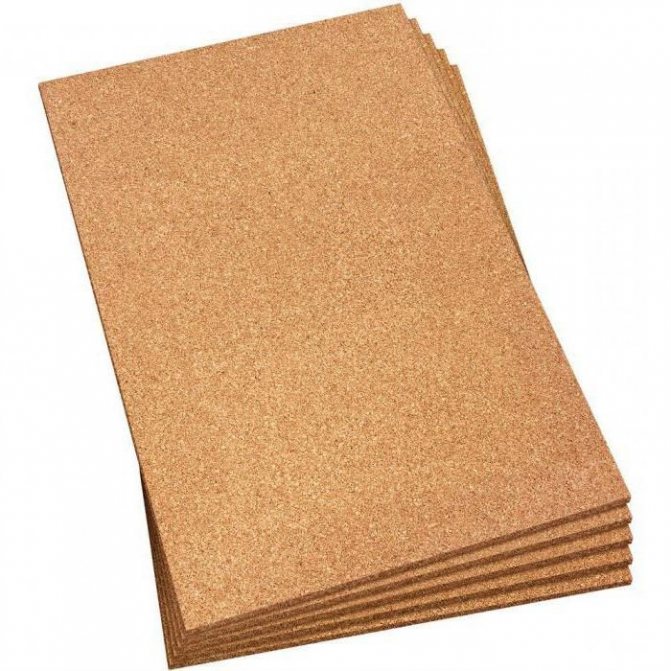

This covering is made from the bark of cork oak, which grows in the western Mediterranean.
You can choose a product of various thicknesses and qualities, but first you need to take care of high-quality waterproofing of the concrete base.
In addition, for the option using linoleum as a decorative topcoat, it is recommended only in cases where the installation of heavy furniture is excluded.
With prolonged pressure on one place, prints may appear, which cannot be gotten rid of.
Jute
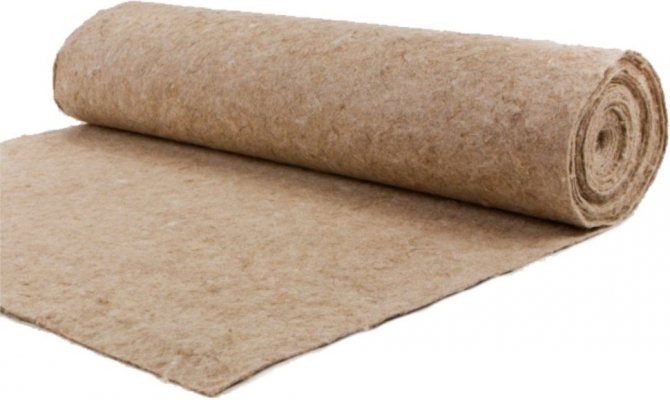

The high cost of fiber pays off with its high performance
The concrete floor, covered with linoleum and insulated with jute fiber, according to the manufacturers, is not afraid of moisture, does not burn, and is also hypoallergenic and has many more positive characteristics.
The disadvantages include poor sound insulation performance and high cost.
Linen
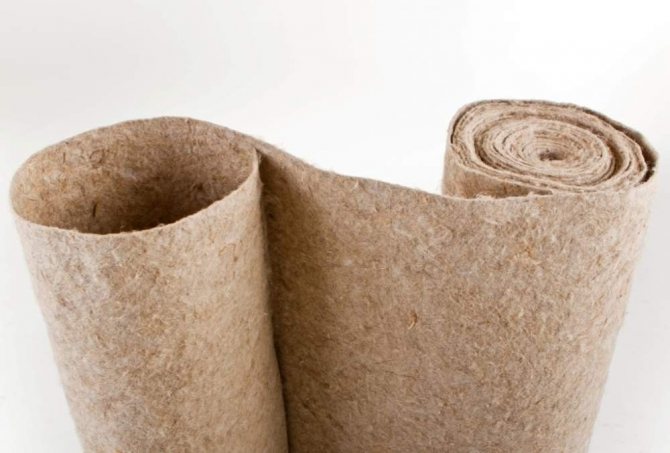

The concrete base, insulated with a linen backing, is practically identical to the jute coating in terms of operational properties, the only difference is in the cost, it is much cheaper.
In addition, before laying it, it is necessary to impregnate it with an antiseptic that repels moisture and prevents the material from burning.
There are combined fabrics consisting of jute fibers intertwined with wool and linen. Outwardly, such a flooring resembles felt. This species has excellent performance in sound and heat insulation.
Artificial
If we consider the surface, which is covered with synthetic and natural insulation, the first will differ significantly from environmentally friendly in many ways. As a rule, such materials have good heat and sound insulation characteristics. Many of them are not susceptible to combustion, moisture and mold. A simple way to insulate the floor with your own hands, see this video:
Foil penoizol (penofol)
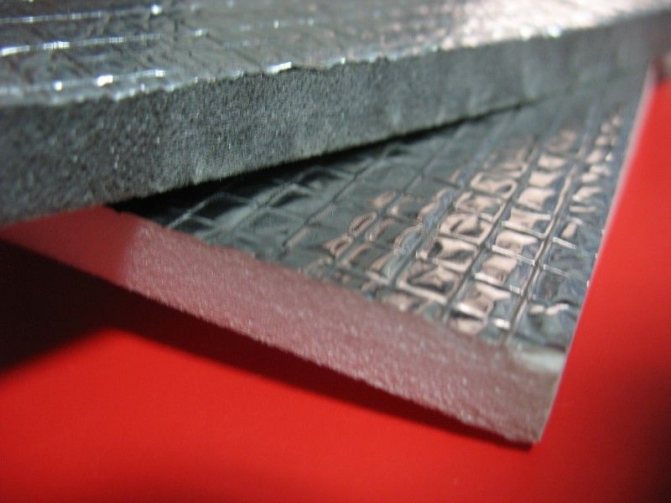

This type of material is laid with foil down
Such insulation for linoleum is made on the basis of foamed polyethylene, and in appearance it is similar to foam rubber.
In this situation, it is recommended to use foil types of materials on which foil is glued on one side.
This can be explained by the fact that such types are more rigid, and a reflector directed upward will additionally return heat back to the room.
Expanded polystyrene
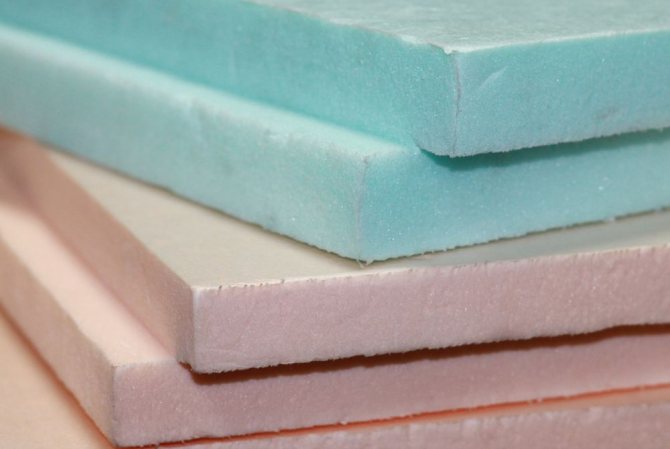

If it becomes necessary to insulate the floor under the linoleum in a private house or apartment, where the ceiling height allows you to "steal" a few centimeters, it is recommended to use expanded polystyrene.
The best result will be achieved by covering the concrete base with extruded slabs.
At a high cost, you can use ordinary construction foam, but it should be borne in mind that its density is much lower, since the production technology is significantly different. A more accurate comparison of performance can be found in the table below.
| Characteristics | Extruded polystyrene foam | Construction expanded polystyrene |
| Water absorption,% by volume for 1 billing month | 0,5 | 5 |
| Water absorption,% by volume for 1 day | 0,1 | 1 |
| Water vapor permeability, mg / m.h. Pa | 0,017 | — |
| Thermal conductivity, W / (m * C) | 0,027 – 0,033 | 0,035 – 0,051 |
| Static bending strength, (kg / cm2) MPa | 0,4 — 1 | 0,065 – 0,15 |
| Compressive strength at 15% linear deformation, MPa, N / mm2 | 0,26 – 0,6 | 0,06 – 0,15 |
| Density, kg / m3 | 27 — 44 | 16 — 36 |
| Operating temperature range, С | -55 to +65 | -55 to +55 |
Linoleum selection
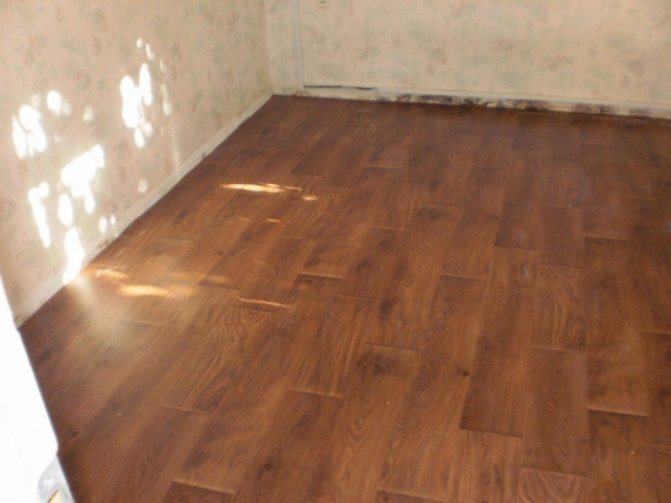

Let's say a few more words about choosing linoleum for an infrared warm floor. First of all, there should be absolutely no harmful substances in the composition of this coating. Therefore, it is best to purchase natural linoleum, which is based on exclusively natural ingredients. According to a number of reviews, some types of linoleum do not withstand constant exposure to temperature. Because of this, the coating may wrinkle, as well as the formation of accordions that will no longer straighten out. This is due to several factors.
For example, when laying linoleum on a rod infrared floor, the temperature level will be automatically adjusted. You will not need to worry about adjustments. With regard to film heating, then it is necessary to set restrictions. For this purpose, a thermostat must be installed. So, it is unacceptable to heat linoleum more than 30 degrees Celsius.
Advice! As practice shows, it is best to warm up linoleum to a temperature of 27 degrees Celsius. This temperature will be sufficient to achieve the most comfortable operating temperature for the coating.
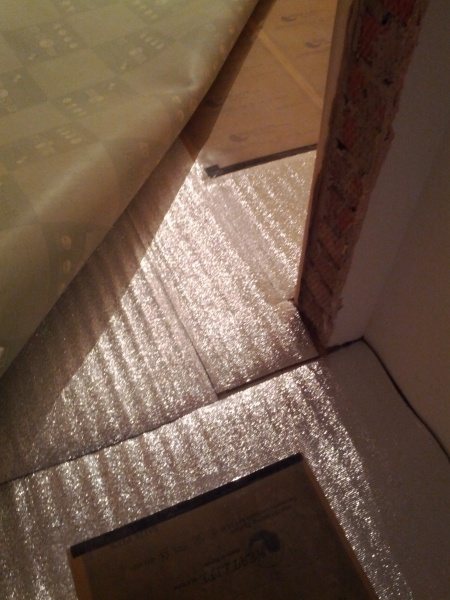

Plus, the flooring itself must be heat-resistant.For this, it should not be too thin or thick. Its thickness should be medium. Ideally, use a commercial grade that is equipped with a protective coating.
As mentioned at the beginning of this article, when choosing, be sure to pay attention to the designations from the manufacturer. The label must have a sign that allows linoleum to be heated. Only in this case it will last a long time and, plus everything, will not have a negative effect on health.
Tips & Tricks
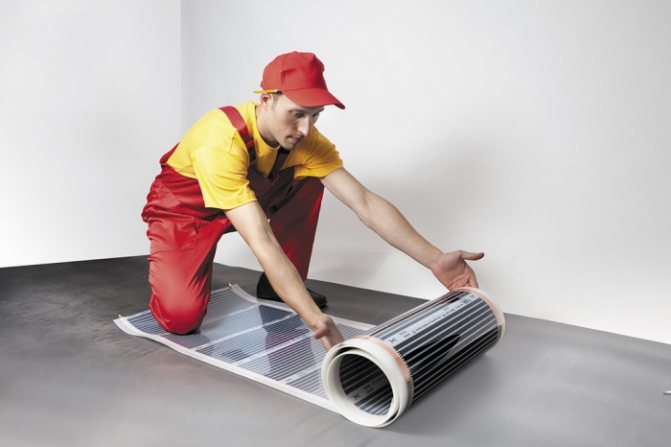

When choosing a heating method, it is extremely important to understand several important nuances. First of all, whether such heating will be primary or additional. When combining linoleum with infrared floor heating, it is allowed only as an additional source of heat. After all, you will not be able to warm up the coating to the required temperature, without damaging the material.
It will also be useful to look at a number of reviews that are left on the forums by those who use a similar heating system. In this way, you can learn from consumers. Well, the most important requirement is compliance with the sequence of installation work. This is the only way you can achieve a positive result.

